Did you know that over 80% of rescue helicopters were grounded during the worst Gulf Coast hurricanes of recent years? While panic filled every shelter and street, advanced drone technology blazed a new trail—proving that V-BAT can save lives when a hurricane can ground helicopters. This is the story of innovation meeting urgency, turning the tide when traditional aviation came to a standstill.
A Startling Reality: When Hurricanes Ground Conventional Helicopters
Hurricanes along the Gulf Coast have left a harrowing mark on countless communities. Strong winds, limited visibility, and relentless rain routinely force traditional helicopters to the ground—leaving life-threatening gaps in rescue and relief efforts. During catastrophic storms like those that battered Louisiana, Mississippi, Alabama, Florida, and the Great Smoky Mountains National Park, as well as Blount County, North Carolina, entire urban and rural areas found themselves isolated from emergency assistance. Shelters filled with families hoping for rescue looked skyward, only to see empty, storm-tossed skies.
In these moments, the pitfall of solely relying on manned helicopter aviation during disaster response becomes painfully visible. Found gap road and major thoroughfares like Newfound Gap Road became impassable, transforming urban neighborhoods and scenic towns alike into islands cut off from aid. As relentless downpours battered areas famous for their rugged beauty. The traditional means of rescue sat idle on rain-soaked tarmacs. Fact: In one Gulf Coast hurricane, more than half the helicopters at the local medical center were unable to lift off, effectively halting the very operations so many lives depended.

What Is the V-BAT?
The V-BAT, developed by Shield AI, is a Vertical Take-Off and Landing (VTOL) drone that combines helicopter-like agility with airplane-like endurance. Using a single ducted fan, it can take off vertically and transition to fast, forward flight, eliminating the need for a runway.
Video Credit: https://www.youtube.com/shorts/_kgOSdZrzGk
V-Bat Autonomous Drone — @Connect_Whats_Next Video Source: Connect_Whats_Next via YouTube. Music by Aleksey Chistilin (“Technologies of the Future”).
Key Features:
Vertical Take-Off & Landing: Operates from confined areas or ships.
Long Endurance: Can fly 13+ hours continuously.
Hybrid Flight Mode: Capable of both hovering and high-speed cruising.
ViDAR Sensors: Detects ships, vessels, or debris over large ocean areas.
Maritime Ready: Suitable for naval or coastal missions.
Integrated Data Feed: Connects with the U.S. Navy’s Minotaur Family of Services (MFoS) for real-time intelligence sharing.
Deployment — UNITAS 2025 Exercise
During UNITAS 2025 (Sept 15 – Oct 3, 2025), involving 8,000 personnel from 25 nations in the South Atlantic and Caribbean, the U.S. Navy used the V-BAT aboard the USS Cooperstown (LCS-23) for Intelligence, Surveillance & Reconnaissance (ISR) missions.
The V-BAT transmitted live video and ViDAR data to the Navy’s MFoS, allowing allied forces to share a Common Operating Picture across ships, aircraft, and ground teams — a critical capability for joint operations and disaster response scenarios such as hurricanes.
Why the Gulf Coast Should Pay Attention?
A Hurricane Scenario
Imagine a Category 4 storm flooding the Mississippi Sound and parts of coastal Louisiana:
Within hours, state agencies launch V-BATs from trucks and Coast Guard cutters.
The drones ascend vertically, switch to forward flight, and map levee breaks and flooded neighborhoods.
Thermal cameras locate stranded residents.
Live video feeds update state command centers from Mobile to New Orleans in real time.
That operational flow mirrors what V-BAT accomplished in UNITAS 2025 — only this time, it would be protecting American communities.
Lessons from Past Storms
Year |
Storm |
Key Drone Use |
Impact |
|---|---|---|---|
2005 |
Katrina |
None — manual reconnaissance |
Weeks to map damage |
2018 |
Florence |
NC statewide UAS program |
Bridge / flood assessment |
2022 |
Ian |
281 UAS sorties / 44 missions |
First interior search by UAS |
2024 |
Helene & Milton |
Skydio & DJI drones |
Localized post-storm recovery |
Traditional quadcopters helped visualize localized damage, but endurance limited coverage. The V-BAT’s hybrid design could bridge that gap — scanning hundreds of miles continuously.
Tech Advantage for Hurricane Operations.
Feature |
Benefit |
|---|---|
Vertical Take-Off |
Operate from flooded zones or ships |
13 + hr Endurance |
Continuous surveillance |
Tail-Sitter VTOL |
Transition from hover to cruise |
ViDAR Sensor |
Detect boats / debris / survivors |
Maritime Compatible |
Use on Coast Guard cutters |
Shared Data Integration |
Unified command view |
“With its VTOL design and wide-area sensors, V-BAT is uniquely suited for ship-based ISR in complex maritime environments.”
— ASD News, Oct 2025
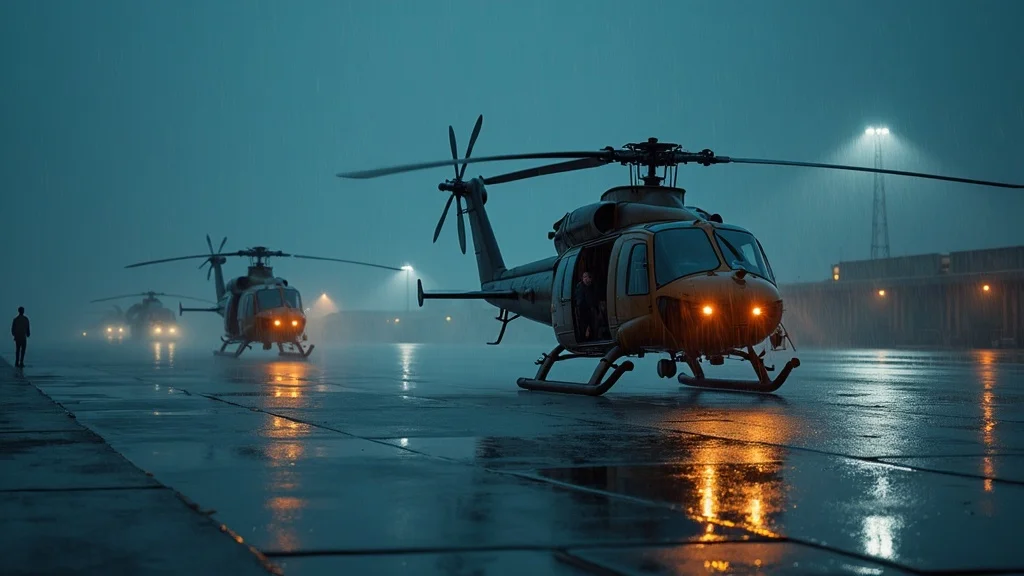
Contracts & Regional Impact.
$198 Million U.S. Coast Guard Contract ( 2024 ) — Shield AI to provide maritime UAS services using V-BAT across fleet operations.
Regional Agencies Investing in UAVs — Alabama EMA, Mississippi Emergency Management Agency, and Louisiana GOHSEP are expanding their drone programs.
Research Partners — University of Southern Mississippi and Auburn University collaborate on drone-based storm modeling and coastal resilience.
These connections mean the V-BAT could soon support not only defense missions but civil operations across the Gulf.
Toward a “Digital Sky” for the Gulf Coast
As a hurricane approaches:
NOAA Saildrones gather ocean data.
V-BATs launched from cutters capture live storm imagery.
State teams use that data post-storm for damage assessment and search & rescue.
Together, they create a “Digital Sky” — a network of autonomous systems feeding real-time intelligence to federal and local agencies.
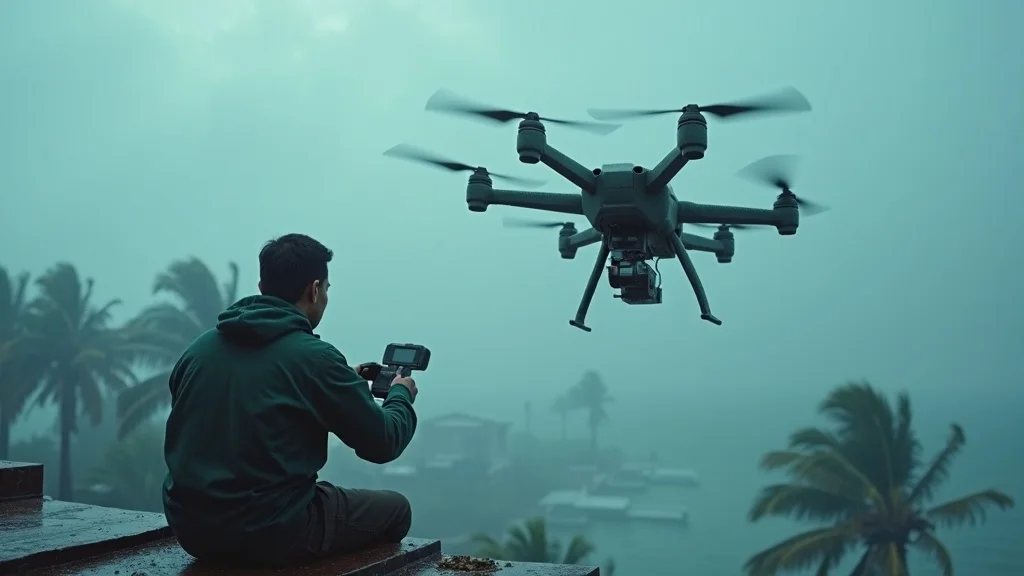
Challenges to Overcome.
Airspace coordination between military and civil UAS.
FAA approval for Beyond Visual Line-of-Sight operations.
Bandwidth & data processing infrastructure.
Funding models for state and local integration.
Still, the technology is tested and ready — the next step is policy and partnership.
The Takeaway.
The V-BAT is more than a drone; it’s a platform for a new era of resilient, connected coastal response. From UNITAS 2025 to the Gulf Coast hurricane season, it embodies the shift from reaction to anticipation — from seeing the damage to seeing it coming.
“As storms intensify and patterns shift, resilience is no longer about reacting. With the V-BAT in the mix, it’s about staying ahead.”— GulfcoastTech Editorial Perspective
“V-BAT was the only eye in the sky when everything else was grounded. It gave us hope and direction.” — Gulf Coast Shelter Volunteer
V-BAT technology delivered
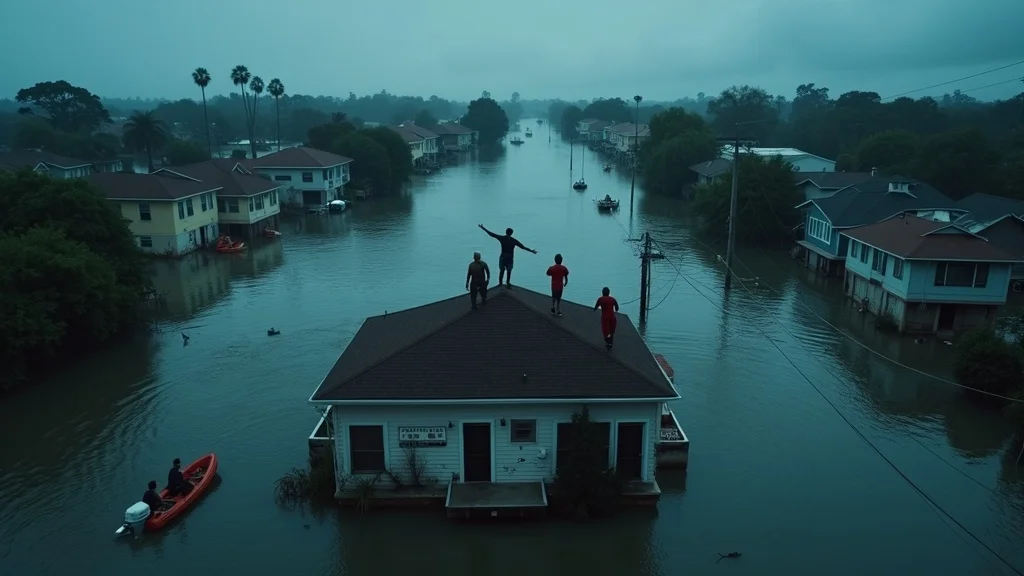
Night Operations, Zero Visibility, and Autonomy: Advantages Defined
ent flight, and all-weather durability makes it indispensable for modern disaster relief.
Video: Drone Footage –
Video Credit: https://www.youtube.com/shorts/rtdgqmvfLHk
Video shows drone helping rescue girl caught in riptide — @NBCNews
Source: Robert NayVideo Source: NBC News (Robert Nay). Originally published on YouTube.
People Also Ask: V-BAT, Hurricanes, and Emergency Aviation
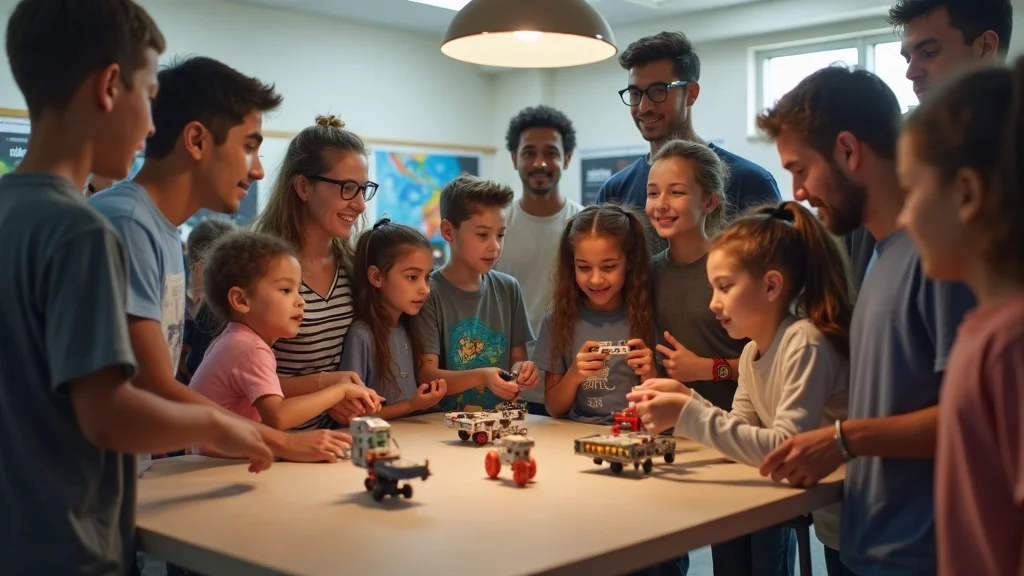
How can my community prepare for future hurricanes by adopting V-BAT technology?
Communities interested in adopting V-BAT for hurricane preparedness should partner with accredited emergency management agencies and technology vendors. Drills, simulations, and public awareness campaigns help integrate V-BAT into existing disaster plans. Funding options often include federal emergency grants or partnerships with local universities and tech centers. By incorporating V-BAT into readiness strategies, communities dramatically boost their ability to respond when traditional aircraft become unusable.
Answers to Popular V-BAT and Hurricane Rescue Questions
FAQ: Why are helicopters grounded during hurricanes, but V-BAT is not?
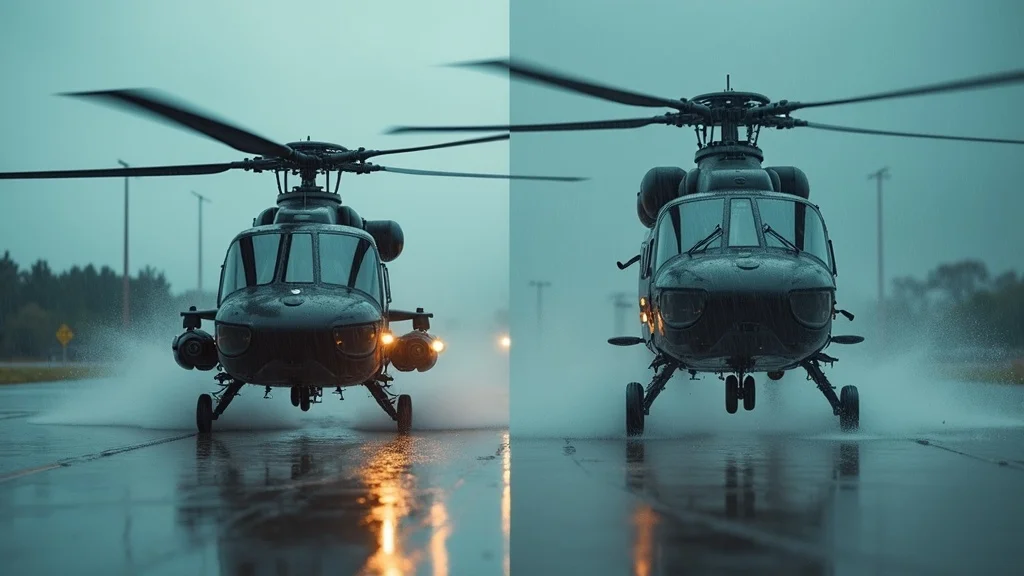
Helicopters are grounded during hurricanes mainly because of severe wind, dangerous turbulence, and poor visibility. Safety risks for pilots and passengers are too great. V-BAT, on the other hand, is unmanned, much lighter, and built to withstand gusty conditions and rain. It uses sensors and autonomous navigation to operate when other aviation options must stay grounded—making it an ideal solution during the most treacherous moments of disaster response.
FAQ: What makes V-BAT suited for hurricane response compared to other drones?
Unlike many commercial drones, V-BAT is custom-built for disaster conditions. Its vertical takeoff, extended range, advanced sensors (including infrared and thermal cameras), and weatherproofing set it apart. V-BAT can fly longer, in rougher weather, and with heavier payloads than typical quadcopters or consumer UAVs—giving it a unique edge for storm response along vulnerable coastlines.
FAQ: How can communities adopt V-BAT for future hurricane preparedness?
Communities should work with regional emergency management offices and trusted technology providers to evaluate V-BAT deployment. Participation in grant-funded pilot programs, cross-training with existing rescue teams, and investment in public awareness will ensure the transition is smooth. Agencies like Gulf Coast Tech provide consulting and technology options specifically designed for hurricane-prone locales.
“When seconds count and helicopters can’t fly, V-BAT missions become the difference between tragedy and survival.”
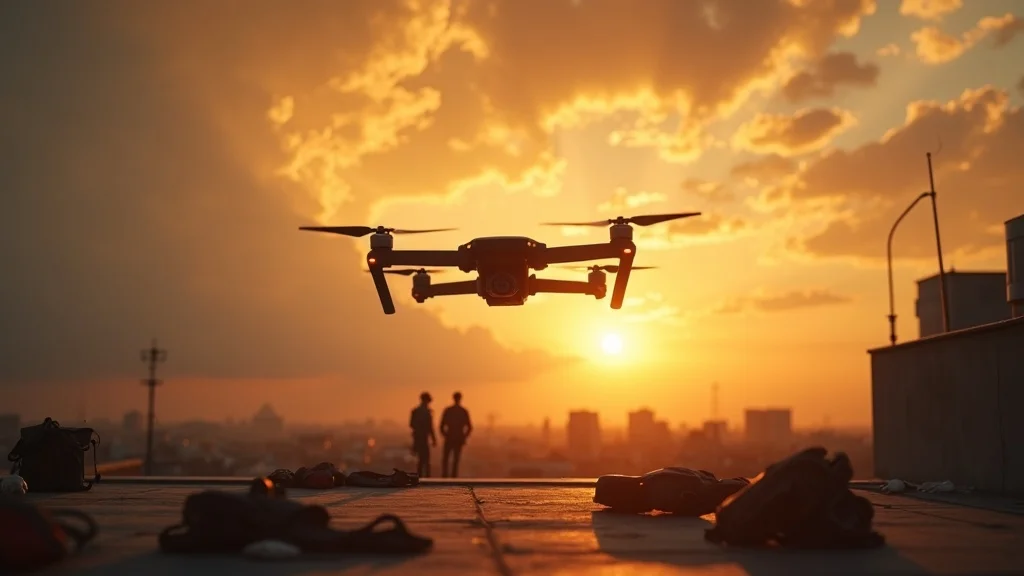
Final Thoughts on the Future: Making Disaster Response Faster and Safer
Video
Here is a futuristic video showing how States can use this modern technology to prepare for disaster response.
Video Credit:
V-BAT Drone Saves Lives with Rapid Disaster Relief Delivery
Video Source: GulfcoastTech
Advocating for Widespread V-BAT Technologies Adoption Along Vulnerable Coastlines
The lessons of recent Gulf Coast hurricanes are clear: technology must outpace the storm. V-BAT has proven that the line between tragedy and survival is measured by our ability to adapt. Its widespread adoption could redefine disaster response—not just in the southern states, but everywhere that storms threaten skies and lives.
Video: Expert Interview – Insights on V-BAT and Modern Disaster Response
Explore Advanced Emergency Solutions Today
Find out how your community can benefit from V-BAT and prepare for hurricane seasons with Gulf Coast Tech’s solutions: https://gulfcoasttech.net/
As you reflect on the transformative impact of V-BAT in disaster response, consider how the principles of rapid innovation and adaptability can be applied to other areas of crisis management and everyday problem-solving. Whether facing a hurricane or a sudden technical breakdown, the ability to act swiftly and leverage the right tools can make all the difference. For a broader perspective on overcoming urgent challenges and ensuring resilience in unexpected situations, explore additional insights on navigating high-stakes repairs and solutions. The future belongs to those who prepare, adapt, and act decisively—no matter the storm.
 Add Row
Add Row  Add
Add 




Write A Comment